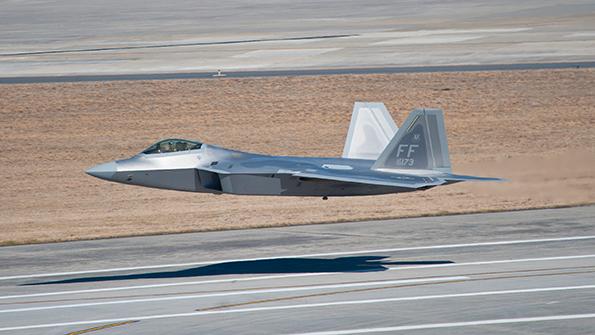
Lockheed Martin ended 2020 on top of the aerospace and defense world. With $65.4 billion in net sales and $24.30 earnings per share, the suburban-Washington company was not just the Pentagon’s leading provider but also the sector leader after commercial aero-heavy rivals were battered by COVID-19.
So if the S&P 500 stock market index is up 17% through Oct. 8 and global A&D shares are up 18%, why is Lockheed’s share price up less than 4%?
It is probably because change is hard and often not welcome, no matter how necessary.
For more than a year, investors and observers of Lockheed have been perplexed. Since June 2020, when then-Chairman, CEO and President Marillyn Hewson started handing over those roles to James Taiclet, the company and Taiclet have labored to convince stakeholders that the legacy A&D giant—best known for its commanding F-35 and F-16 franchises—can and should be a leader of platform-connecting “5G.mil”-type offerings (AW&ST March 23-April 5, 2020, p. 34). “What is really important for us to do next is to bring the network effects to those platforms,” Taiclet said at a webinar on Oct. 13. What is more, the legacy defense industry must evolve.
The problem is that almost no one is buying it, literally and figuratively, or at least not yet.
To be sure, Taiclet and Lockheed deserve credit for shining a spotlight on some of the biggest—and probably the most important—questions dogging large legacy defense prime contractors in the West, including: What does national security look like in a peer-level world that includes artificial intelligence, cloud computing and other platform-agnostic warfighting technologies?
The trouble for primes is that those questions beget a host of other inconvenient inquiries: How will contractors grow in this new paradigm, and how will they differentiate themselves when the national budgets they rely on are plateauing at best and likely could decline in real terms this decade?
As widely followed defense analyst Byron Callan of Capital Alpha Partners has pointed out in multiple notes to clients in recent years, the unsatisfying answer from primes so far is simply that they are closely aligned with government-customer priorities. Further, most primes seem to spend the same low-single-digit percentage on independent research and development, and they all seem to project the same mid-single-digit revenue growth in coming years. With all that, how can anyone stand out above peers?
For Lockheed, those debates and questions would have been hard enough, but they come amid a quartet of unplanned and unwelcome developments since spring. First, Lockheed unveiled a $225 million financial charge in the second quarter due to a classified U.S. aerospace program. Then, Wall Street-friendly Chief Financial Officer Ken Possenriede suddenly resigned in August, citing personal reasons. Next, Lockheed’s proposed takeover of Aerojet Rocketdyne looked vulnerable to antitrust rejection. Finally, this month, Lockheed and the Pentagon agreed that F-35 production would top out at 156 Joint Strike Fighters a year for the foreseeable future instead of the roughly 170 that had been expected.
Analysts such as Vertical Research Partners Rob Stallard and Karl Oehlschlaeger suggest that the issues have aggregated to give investors pause. “All of this was fine . . . until it wasn’t,” they said in an Oct. 12 report. “We don’t think it is one event that has led to investor disgruntlement with management but instead something that appears to have grown as Lockheed’s stock has continued to lag in 2021.”
According to investor chat websites and financial analysts, some insiders are starting to key into the fact that maybe Lockheed’s stock is underappreciated. Above all, Taiclet is correct about the big picture. “In fact, his comments align very closely with what senior military and defense officials have been saying for years,” Stallard and Oehlschlaeger noted.
“Perhaps what investors need to see is some of this rhetoric being turned into reality—and we expect this to take more than one year,” the analysts said. Clean financial results from the current third quarter and upbeat 2022 projections also will help. Taiclet gets his next big chance on Oct. 26, when Lockheed reports third-quarter earnings while offering preliminary year-ahead commentary.





